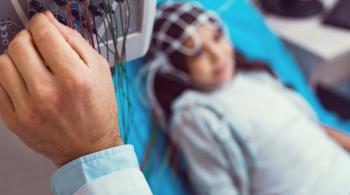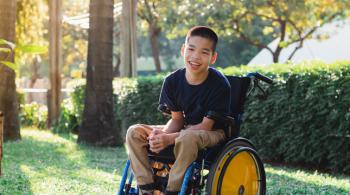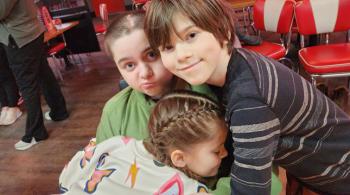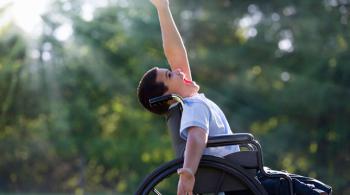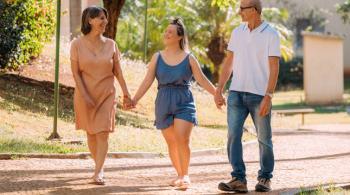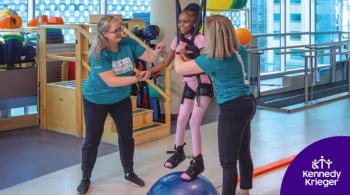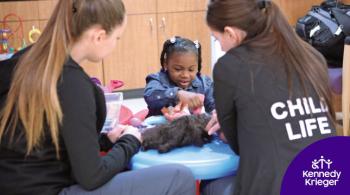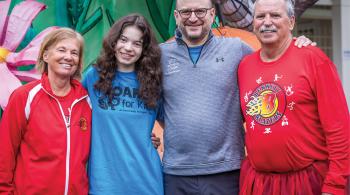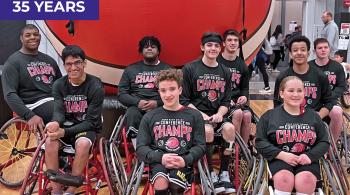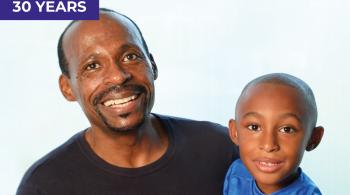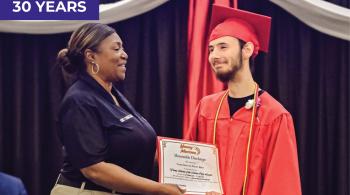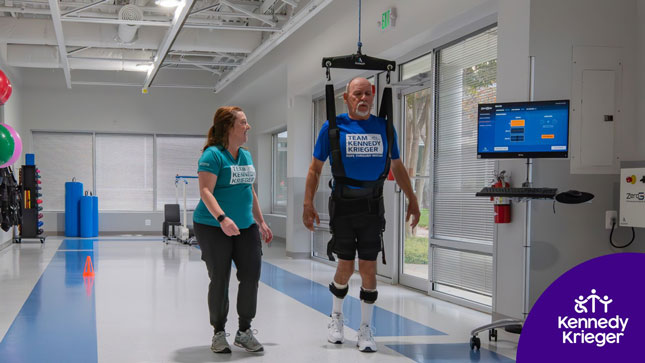
By Dr. Bradley Schlaggar, President and CEO, Kennedy Krieger Institute
At Kennedy Krieger Institute, our commitment to innovation means embracing new technologies, fostering interdisciplinary collaboration, and listening deeply to the needs of the individuals and families we serve. Every breakthrough we pursue is driven by our mission to improve the lives of the tens of thousands of patients we see each year.
Since its founding in June 2005, the International Center for Spinal Cord Injury (ICSCI) has been a shining example of ingenuity and a beacon of hope for individuals living with paralysis. Grounded in the knowledge that recovery remains possible, even years after injury, ICSCI has redefined rehabilitation through a powerful combination of advanced medical care, cutting-edge research, and personalized therapy.
Each year, ICSCI provides inpatient and outpatient care to approximately 1,000 children, adolescents, and adults. While spinal cord injury is often associated with traumatic events such as car accidents or falls, the center also treats paralysis resulting from a wide range of causes, including developmental conditions like spina bifida; vascular events such as spinal cord stroke and arteriovenous malformations (AVMs); demyelinating diseases, including transverse myelitis and multiple sclerosis; infectious diseases like meningitis and acute flaccid myelitis; spinal tumors and surgical complications or rare neurologic disorders, such as ALS and Friedrich’s ataxia.
What distinguishes ICSCI from other spinal cord injury treatment centers is its groundbreaking approach to recovery through Activity-Based Restorative Therapy (ABRT). Unlike traditional rehabilitative models that focus on compensating for lost function, ABRT is designed to restore neurological function.
For decades, it was widely believed that meaningful recovery was only possible within the first year post-injury. As a result, therapy after that first year primarily centered on helping individuals adapt to life in a wheelchair, emphasizing compensation over restoration.
ABRT challenges that notion by aiming to facilitate nervous system functional recovery, both above and below the site of injury. This approach encourages the brain and spinal cord to form new neural connections, even years after paralysis. It also emphasizes the need to keep muscles from atrophying and joints supple, to have patients upright versus seated, and bearing weight whenever possible. The result is improved mobility, greater independence, and long-term health benefits, including reduced risks of osteoporosis and cardiovascular decline.
ABRT utilizes targeted interventions, including:
Functional electrical stimulation (FES): Functional electrical stimulation works by having a computer send electrical messages to a muscle, causing it to contract in a way that can be used for purposeful movement, such as grasping an object.
Partial weight-supported walking (PWSW): In partial weight-supported walking therapy, the patient is suspended in a harness, which allows them to walk over an electric treadmill at a very low speed.
Aquatic therapy: Water supports about 90 percent of a person’s weight and provides a unique therapeutic environment. People with paralysis can perform activities in water that would be impossible for them on land.
Robotic-assisted movement using the Ekso Exoskeleton: This wearable robotic suit is designed to help patients get back on their feet and supports re-learning correct step patterns and weight shifting.
At the core of ICSCI’s success is a continuous cycle of innovation in which clinical challenges spark research, research shapes training, and training elevates patient care. “Our goal,” says Dr. Rebecca Martin, Manager of Clinical Research and Education, “is to help patients achieve more, with better outcomes, and in less time.” This principle drives every project the ICSCI team undertakes and reflects Kennedy Krieger’s unwavering commitment to collaboration and progress.
At Kennedy Krieger, innovation isn’t defined by technology alone; it’s defined by people. It’s this blend of expertise, creativity, and compassion that transforms possibility into hope for every patient, every day. As Dr. Martin puts it, “You can place a robot anywhere, but without a therapist’s ingenuity and ability to creatively apply that technology, it has no real impact.”

